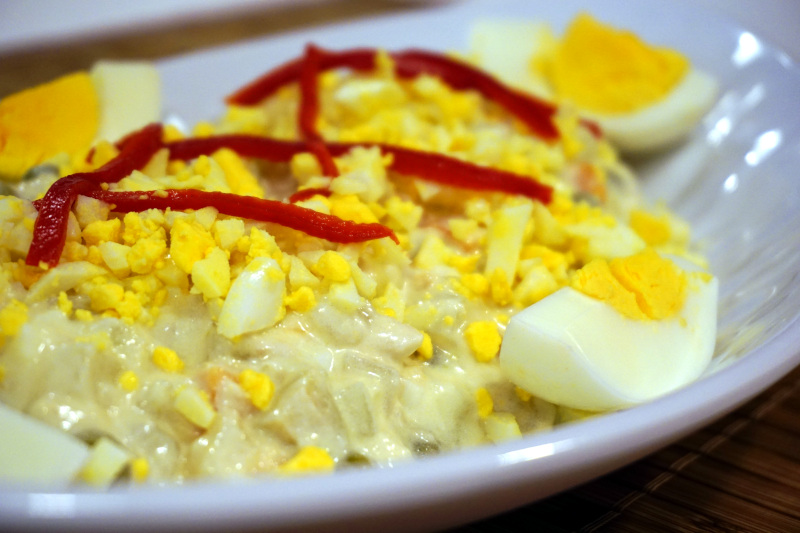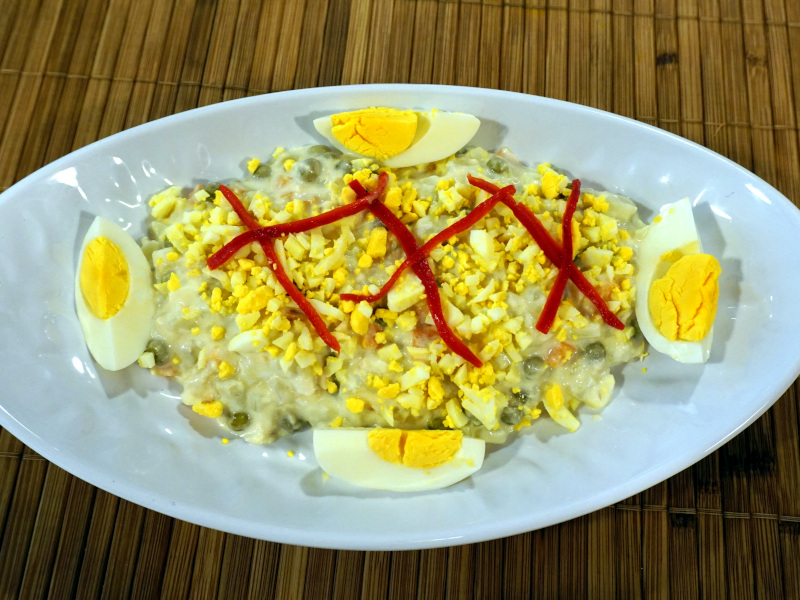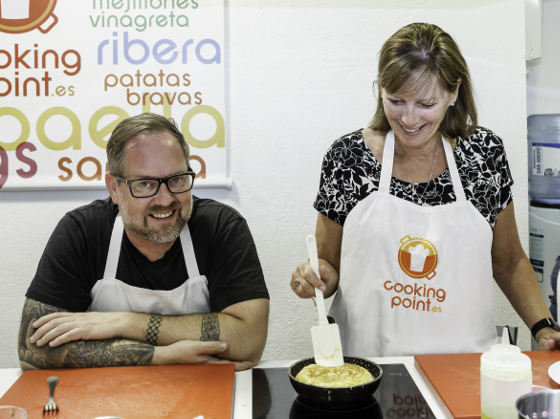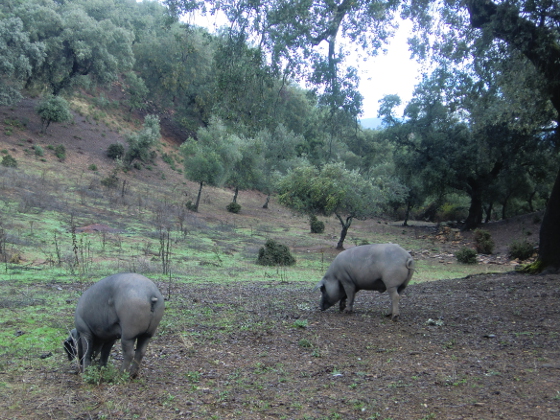I have to say I associate Ensaladilla Rusa with my childhood when my mother used to prepare it in bulk for her hungry children. That was the star dish of our summer cold dinners, rounded up with cold cuts (jamón, sausages, cheese,...) that would provide us with the proteins to grow.
At that time, we knew nothing about its aristocratic origins, back at L'Hermitage, an upper-class restaurant in Moscow, where the chef Lucien Olivier, a Russian with French-Belgian origins, created it in the 1860s. As time went on, that original "Russian Salad" recipe crossed borders and was adopted by most countries going west, up to Spain and Portugal. Every country has it adapted to its local ingredients and taste.
The Spanish version of such recipe is called Ensaladilla Rusa, and nowadays it is considered staple and available in different presentations in a variety of places. From a casual snack for passersby, ubiquitous in most bars, service areas, and vending machines, to more stylized presentations with unexpected toppings and mayos in fancier tapas bars or restaurants, or to the home-made one, served on massive platters in large families.
The list of ingredients is not fixed, since each chef has their personal choice, but there should not be missing potatoes, carrots, peas, canned tuna, and mayonnaise. Eggs are usually part of the indispensable list, both for presentation and their protein contribution, as well as roasted red bell peppers and olives, to give a forceful flavor to a, otherwise bland, potato salad.
However, for me, the key ingredient is mayonnaise. Better if it is homemade, with only mild oil, egg, salt, and vinegar. I avoid olive oil here because it could bias the flavor. In any case, don't be shy and don't let the salad be too dry, or too short of mayo. As a side comment, mayonnaise used in all dishes for public consumption is made with pasteurized eggs to avoid salmonella.
Ingredients:
For the garnish:
Preparation:
Check out the below video with the recipe step by step.
All you should know about the potato omelet: recipe, customs, best places to eat in Madrid.
What makes so special the Iberico Ham? This particular breed, only found in Spain has unexpected benefits for your health



